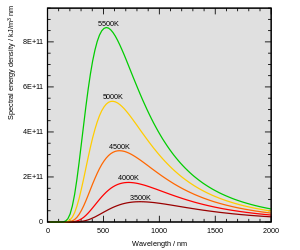BVH
Flashaholic
Here's an explanation of the term "degrees Kelvin" as it relates to bulb color temperature we all talk about.
When a piece metal is heated up to "X" degrees Kelvin, the color of the metal is observed and called "X" degrees Kelvin. So for example, if this piece of metal is heated up to 6000K, it will be the glowing the color of the lovely 6000K HID bulb we all know and love. And when its heated to 4300K, it's glowing the color of the HID bulb many of us prefer.
Just for fun,
4300 Kelvin is equal to 3,280 degrees F, or 2,371 C
5000 Kelvin is equal to 8,540 degrees F, or 2,760 C
6000 Kelvin is equal to 10,340 degrees F, or 3,315 C
I'm not a mathematician, but I could not see, using the online conversion calculator, where there is any linear increase similarity between K and F. Meaning every time there's a 1 degree rise in F, it does not result in same incremental rise in K
It must be late for me to do this mindless stuff.
When a piece metal is heated up to "X" degrees Kelvin, the color of the metal is observed and called "X" degrees Kelvin. So for example, if this piece of metal is heated up to 6000K, it will be the glowing the color of the lovely 6000K HID bulb we all know and love. And when its heated to 4300K, it's glowing the color of the HID bulb many of us prefer.
Just for fun,
4300 Kelvin is equal to 3,280 degrees F, or 2,371 C
5000 Kelvin is equal to 8,540 degrees F, or 2,760 C
6000 Kelvin is equal to 10,340 degrees F, or 3,315 C
I'm not a mathematician, but I could not see, using the online conversion calculator, where there is any linear increase similarity between K and F. Meaning every time there's a 1 degree rise in F, it does not result in same incremental rise in K
It must be late for me to do this mindless stuff.
Last edited:



